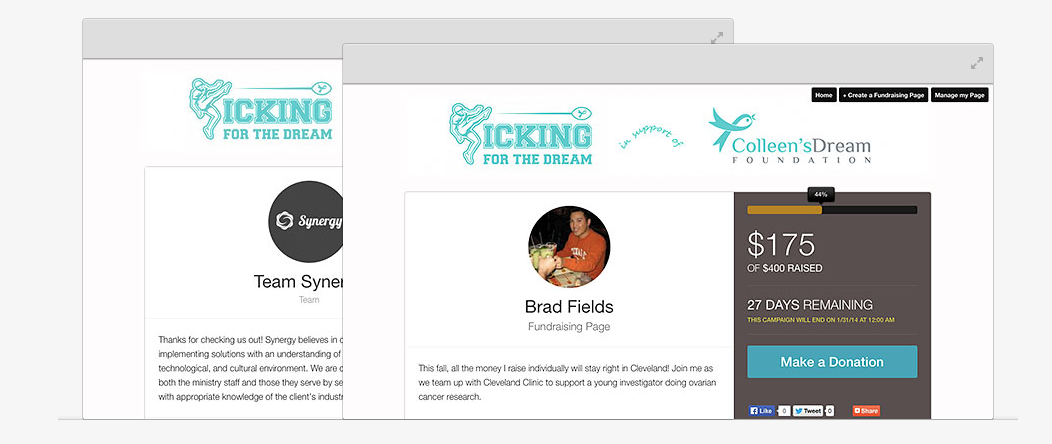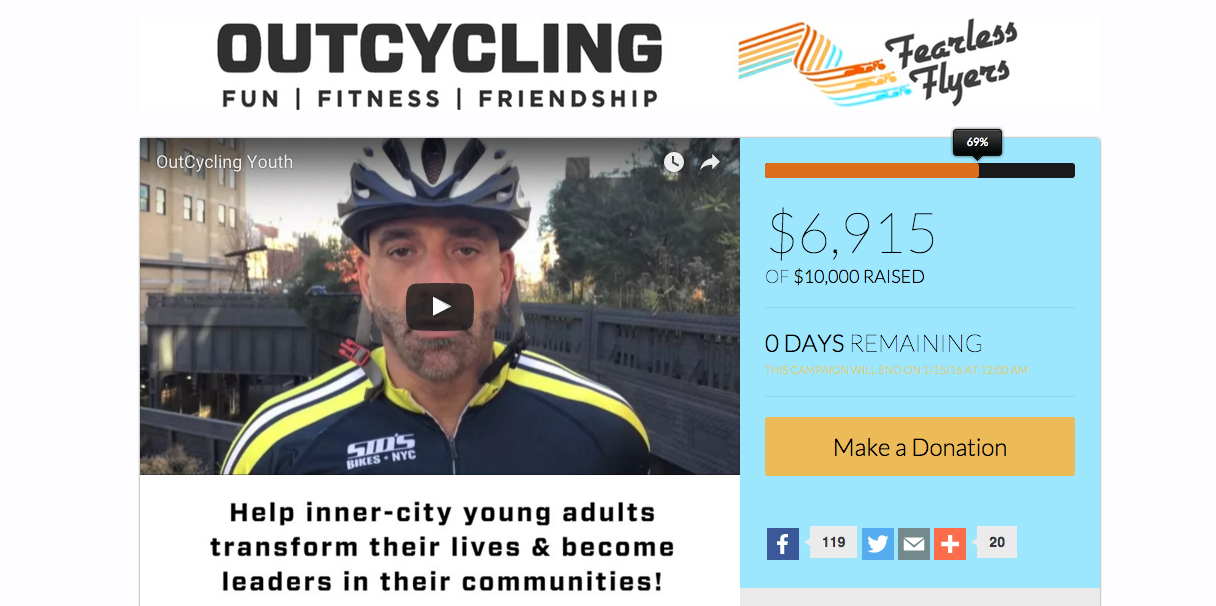
If you’re exploring using crowdfunding to support your nonprofit or cause for the first time, it might be overwhelming when you look at examples of all the different ways it can be executed – from campaigns that are based on events, hundreds or thousands of people fundraising on their own, to incentives and rewards and challenges galore.
While we believe that in fundraising, the more fundraising tactics you put into play, the better, it helps to clarify just how much more these fundraising strategies add, and when to go for it. That means breaking down the levels of three-tiered crowdfunding. What exactly does that involve? We’ll show you.

When we talk about three-tiered fundraising, we’re just talking about the three different levels that could be included in a crowdfunding campaign, based on who is doing the fundraising.
Simply put, when you use more tiers, you’ll have more reach, and ideally, more donations (see graphic). It’s putting good old-fashioned word of mouth to work, but in a more active way, and helps to lessen your organization’s load because other people are helping to bring in funds on your behalf.
Let’s discuss what each level of three-tiered crowdfunding is all about, and why it’s important.
Tier 1: Main Crowdfunding Site

The first tier is your base level – the first piece you need to actually have an online crowdfunding campaign. So when we talk about setting up a page on CauseVox in minutes, this is what we mean.
Your crowdfunding site is the place you’ll host your fundraising campaign, with all the bells and whistles that you may want or need – like a blog, social media integration, photos, videos, and more.
You set the fundraising goal, and the date, and if you want, provide impact metrics to break down what each donation can support.
When you use a crowdfunding site as is, you’re getting donations in from various individuals, just as you would through your main organization’s website – they aren’t fundraising to meet their own personal or team goals, they’re just all contributing to your set goal.
This approach could be best for the following situations:
- This is your first time trying crowdfunding
- Your resources and staff are limited
- You don’t have an urgent timeframe or a significant fundraising goal
- Your community of donors and prospective donors is small
- You are a new nonprofit
- Your target donor demographic preferstraditional marketing and fundraising tactics
Examples of crowdfunding campaigns using this setup only:
- Outcycling’s Fearless Flyers program raised funds for LGBT youth cyclists
- Advocates #SummerofFun campaign raised funds for recreational activities for individuals with disabilities
Tier 2: Personal Fundraising

If you’re ready to take things to the next level and ask your community to really pitch in, you can add on personal fundraising, also known as peer-to-peer, or P2P.
In this approach, individuals are now fundraising on your behalf to meet personal goals, to support your overall campaign goal.
So when you set a goal of $50,000 to fund Alzheimer’s research, folks in your community can now set up their own personal fundraising pages and create goals to raise, say, $1,500 or $5,000 from family, friends, classmates, and even strangers, to contribute to the $50,000.
By implementing the personal pages, you’ve now handed the story and mission over to anywhere from 10 to potentially thousands of people who will speak on your behalf, so you’ve got to give them the tools to do it.
We suggest crafting coaching tips and messages of support that can be shared within your fundraising dashboard, and creating a toolkit with sample messaging, graphics, and templates that fundraisers can use when they send out their own emails and social media posts asking for money.
Meanwhile, your reach and the potential donation amount have just expanded, and you have new content!
Consider adding tier two in the following situations:
- Your cause and/or campaign have a particularly personal connection or relevance
- You’re looking to grow your supporter and donor base
- You have an audacious fundraising goal
- You need more user-generated content and stories
Examples of campaigns using personal fundraising:
- Project Renewal’s time-sensitive campaign, Save Renewal Farm, rallied individuals to fundraise to save an important program site
- One Girl’s “Do It In a Dress” campaign had 76 supporters who created personal pages to raise more than $40,000
Tier 3: Team Fundraising

Now it’s time to really go all out, and add on the final tier – team fundraising. Employing this tactic can take a campaign from struggling to meet their goal, to completely blowing it out of the water, and then some.
Team fundraising is long thought to only be good for such well-known events as the American Cancer Society’s Relay for Life, or other similar walk/run/ride campaigns. And while those have set the standard for team and personal fundraising, there are many other causes that team fundraising can be a boon for as well.
When you ask people to form teams, you’re utilizing a strong sense of connection and community that already exists, and applying it to your mission. Team fundraising is essentially the concept of “it takes a village” – but on turbopower.
Just like with personal fundraising, setting this up on your site means you’ll need to provide extra resources and guidance to your team captains, who in turn will coach their own fundraisers.
Teams can range from a family of four, to classrooms, kickball leagues, and entire corporations, and each will have their own story and their own way of inspiring donations to support your overall goal.
Try tier three when:
- You are partnering with multiple companies, organizations, or groups
- You want to empower highly active supporters looking to take things to the next level (as team captains)
- Your campaign is activity or event-based
- You need more reach in a shorter amount of time, for a big fundraising goal
Examples of campaigns using team fundraising:
- Well Aware’s Shower Strike campaign raised $77,000 in a week from clubs, families, businesses, and individuals
- Mox Boarding House’s Moxtropolis board game event met their goal three times over by making fundraising integral to the competition.
As you can see, each tier of fundraising gives your campaign the potential to reach new audiences, inspire rich, personal storytelling, and perhaps even surpass your goals.
Take a close look at what you want to achieve with your crowdfunding campaign to determine how many tiers you need – and remember, it may not be the same every time.
More resources:
The Power of One + Many: Individual and Team Fundraising ebook
Ultimate Guide to Peer-to-Peer Fundraising ebook




